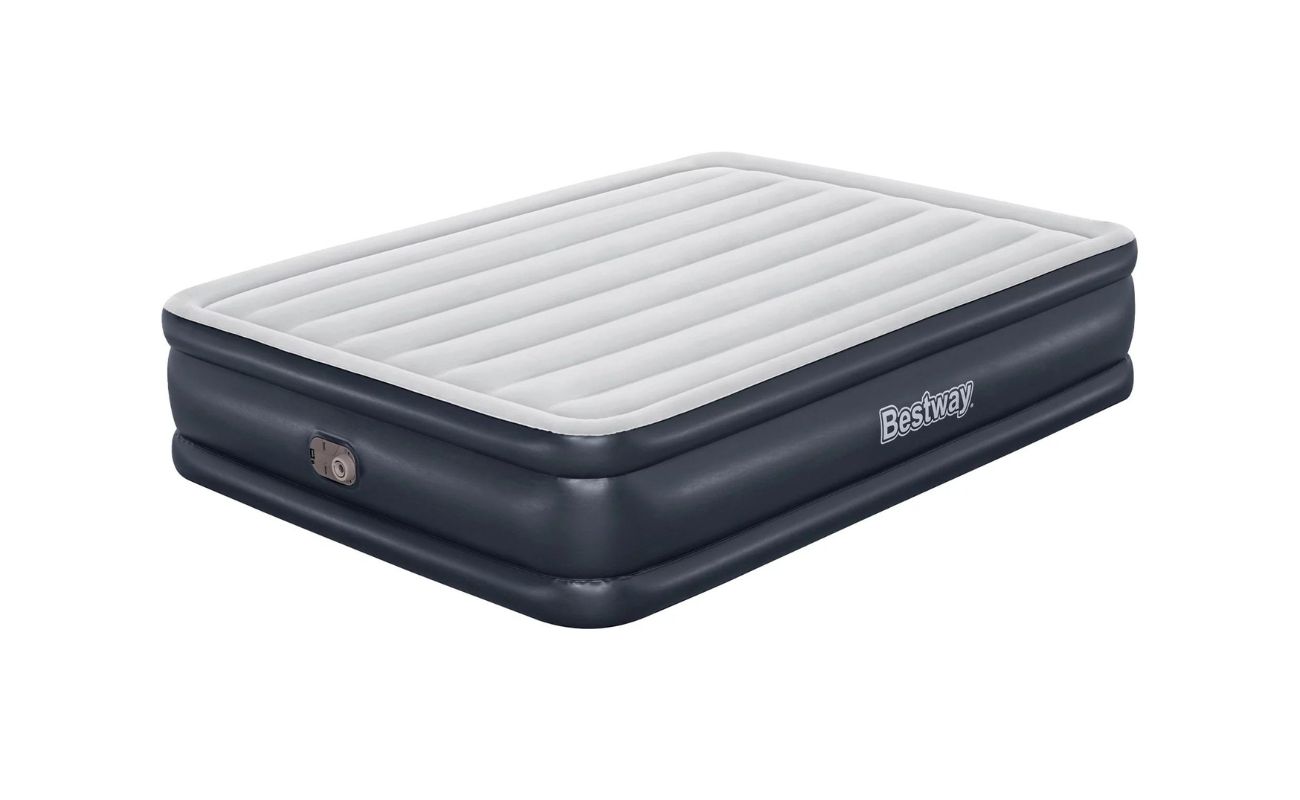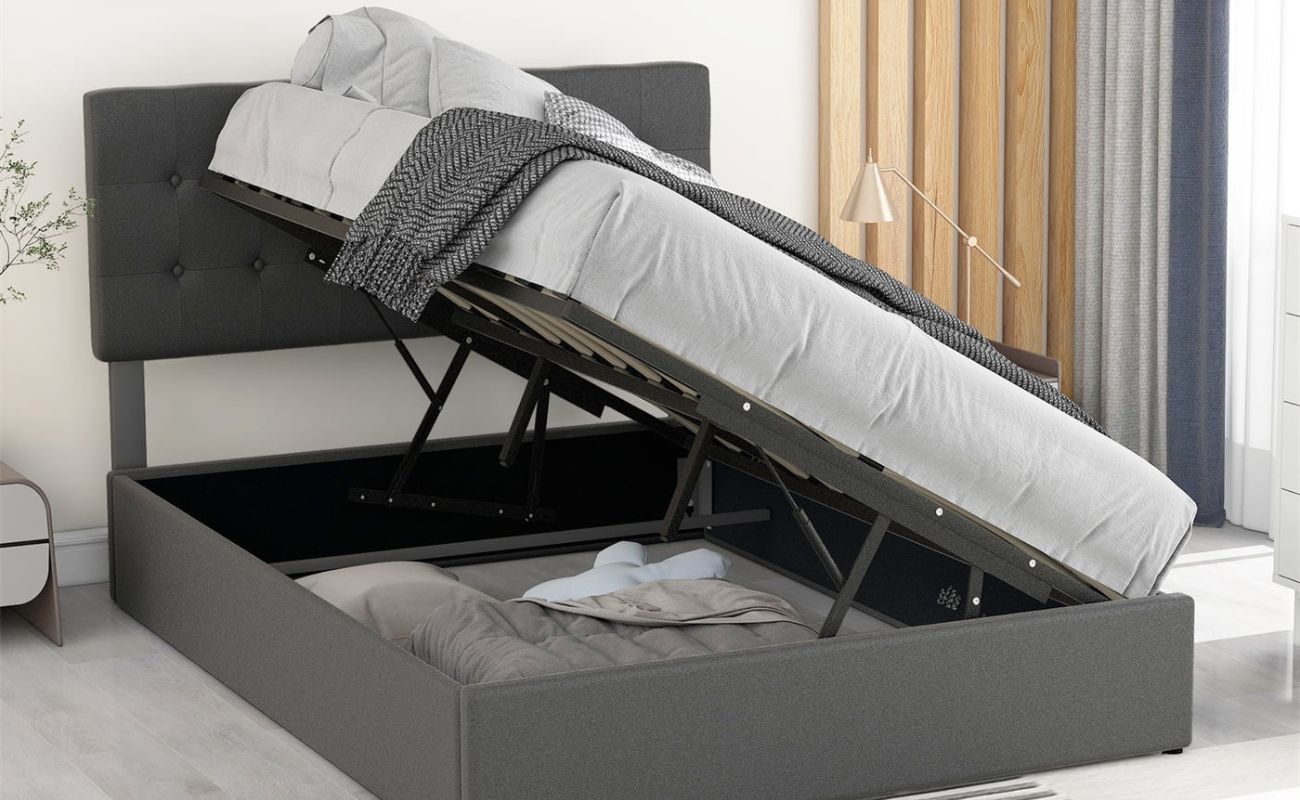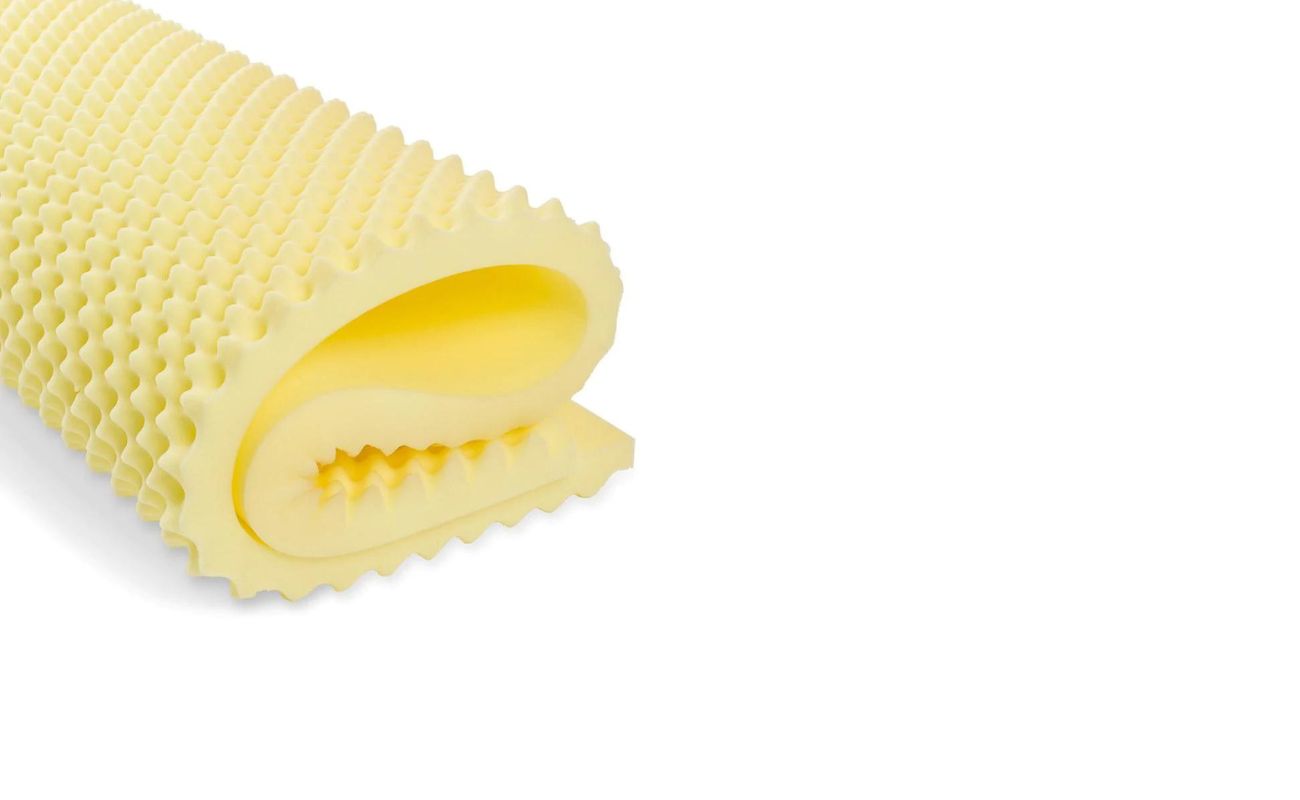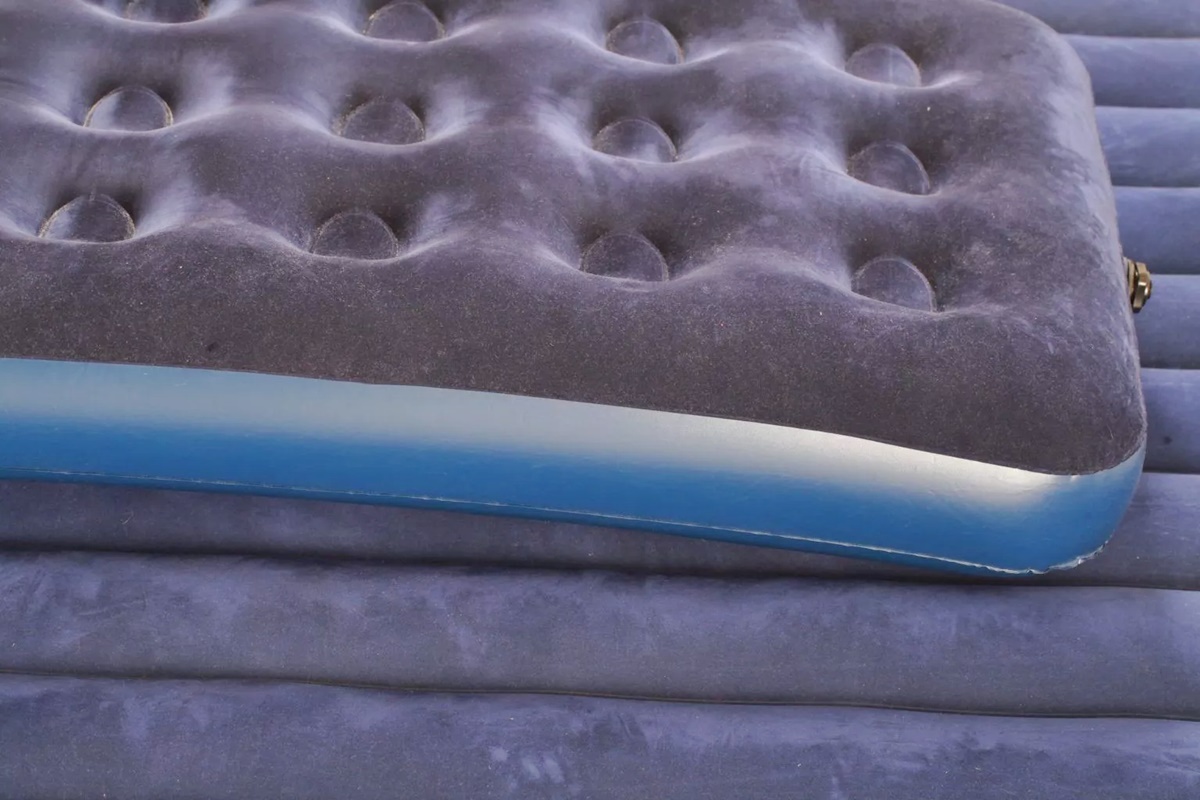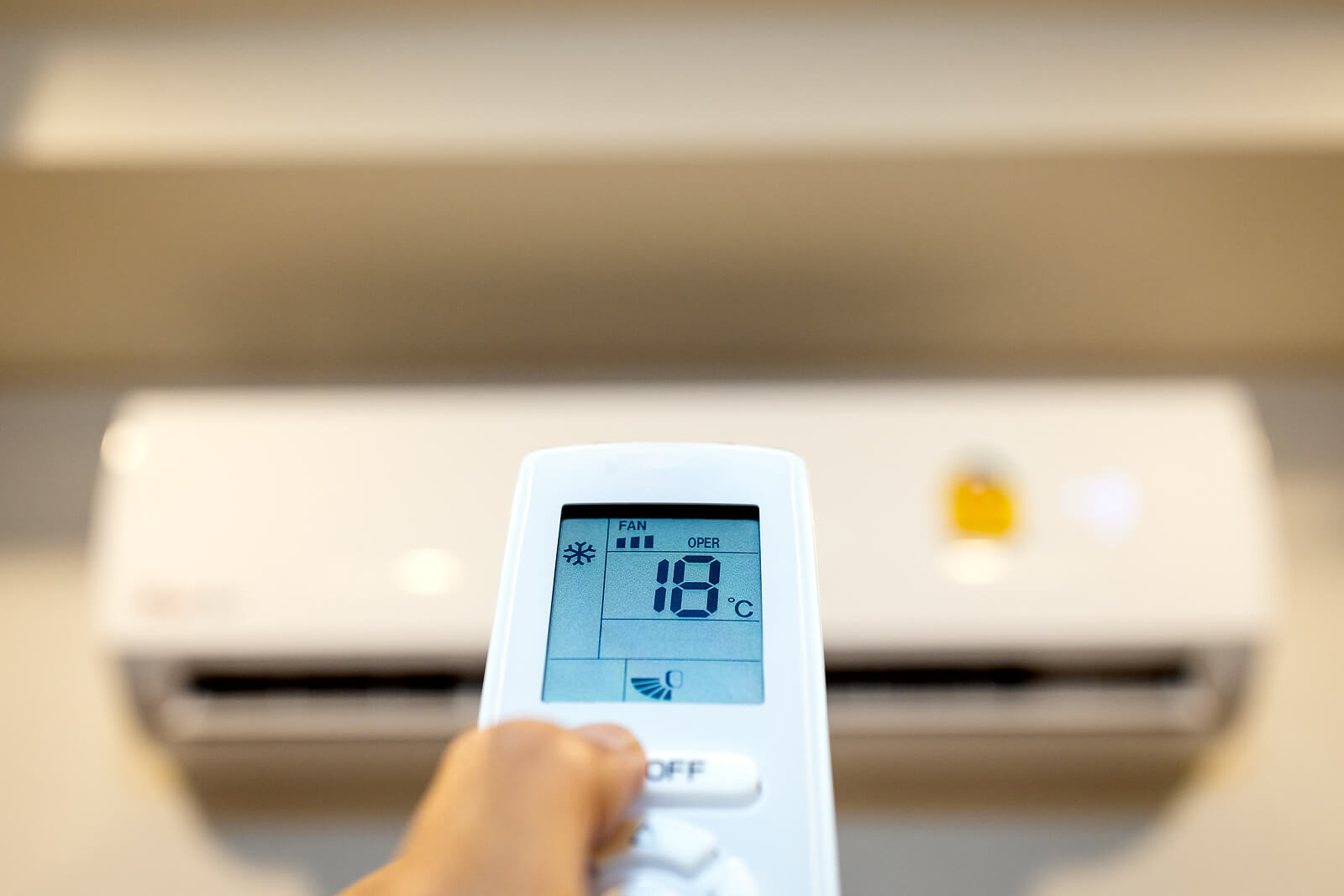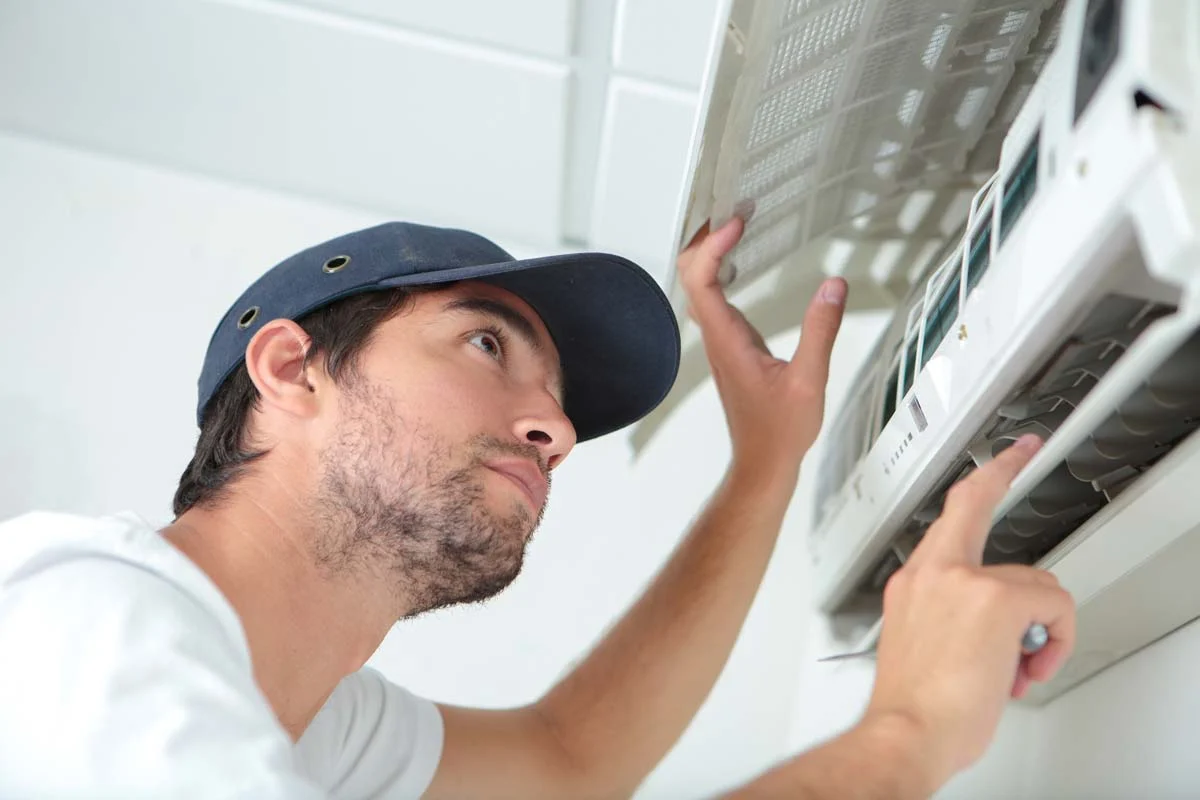Home>Furniture>Bedroom Furniture>Why Is My Air Mattress Deflating
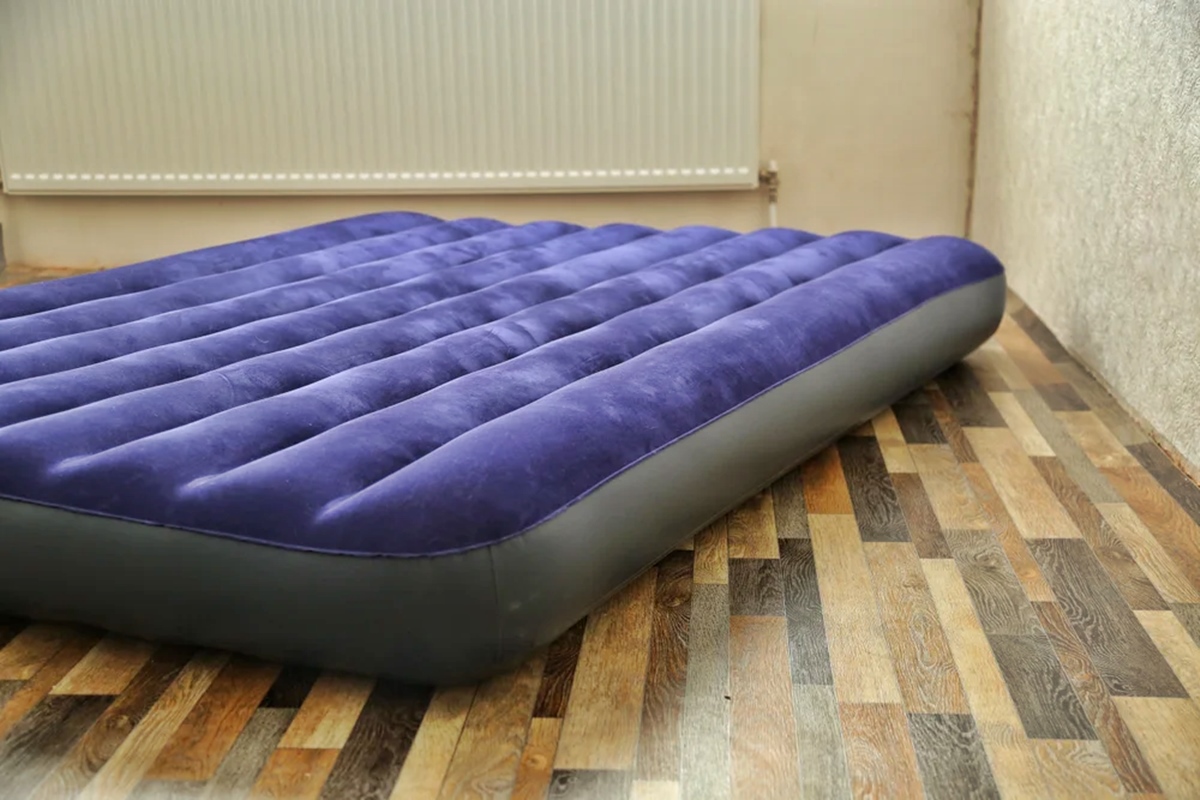

Bedroom Furniture
Why Is My Air Mattress Deflating
Modified: February 25, 2024
Discover why your air mattress keeps deflating and find solutions to fix it. Get the best quality bedroom furniture to ensure a comfortable night's sleep.
(Many of the links in this article redirect to a specific reviewed product. Your purchase of these products through affiliate links helps to generate commission for Storables.com, at no extra cost. Learn more)
Introduction
An air mattress is a convenient and versatile piece of bedroom furniture that offers a portable and comfortable sleeping solution. However, one common issue that many people encounter with air mattresses is deflation. There is nothing more frustrating than waking up in the middle of the night to find yourself sinking into a deflated air mattress.
Understanding the reasons why your air mattress may be deflating can help you troubleshoot the problem and find a solution. In this article, we will explore the common causes of air mattress deflation and provide tips on how to prevent and resolve the issue.
Whether you use an air mattress for camping, as a temporary sleeping solution for guests, or as your primary bed, it is essential to address any deflation issues promptly. Let’s dive into the primary reasons behind air mattress deflation and discover ways to overcome this annoying problem.
Key Takeaways:
- Prevent air mattress deflation by regularly inspecting for leaks, using a mattress protector, and investing in a high-quality mattress. Proper storage and maintenance are key to ensuring a reliable and comfortable sleep surface.
- Address air mattress deflation by locating and patching leaks, following proper inflation techniques, and being mindful of temperature and storage conditions. Investing in a high-quality air mattress can significantly reduce the risk of deflation.
Read more: Why Does My Blow-Up Mattress Keep Deflating
Common Reasons for Air Mattress Deflation
There are several factors that can contribute to air mattress deflation. Understanding these common causes can help you identify the issue and take appropriate measures to fix it. Here are the most frequent reasons why your air mattress may be deflating:
-
1. Leaks and Punctures
Leaks and punctures are the most common culprits behind air mattress deflation. Over time, the mattress may develop small holes or tears, causing air to leak out slowly. These leaks can be caused by sharp objects, pets’ claws, or even general wear and tear. It’s essential to inspect your mattress regularly for any signs of leakage.
-
2. Temperature Changes
Extreme temperature changes can impact the air pressure inside your mattress. When the air inside the mattress expands or contracts due to temperature variations, it can lead to deflation. For instance, if you inflate your air mattress in a warm room and then move it to a colder space, the air may condense, causing the mattress to deflate.
-
3. Improper Storage
Storing your air mattress incorrectly can also result in deflation. Folding or compressing the mattress unevenly, exposing it to sharp objects or rough surfaces, or storing it in damp or humid conditions can damage the material and cause leaks. It is important to follow the manufacturer’s instructions for proper storage to avoid unnecessary deflation issues.
-
Read more: Why Is My Air Mattress Losing Air
4. Overinflation
Believe it or not, overinflating your air mattress can cause it to deflate. When you overinflate the mattress, the excess air puts extra strain on the seams and valves, increasing the risk of leaks. It’s important to follow the recommended inflation levels for your specific mattress to prevent overinflation and subsequent deflation.
-
5. Aging and Wear
Just like any other product, air mattresses will naturally wear out over time. The repeated use, folding, and storage can weaken the material, making it more susceptible to leaks and punctures. Aging air mattresses may have weakened seams and valves, leading to gradual deflation. If your mattress is older and showing signs of wear, it may be time to consider replacing it.
Now that we’ve explored the common reasons behind air mattress deflation, it’s time to move on to troubleshooting tips that can help you fix the problem effectively.
Leaks and Punctures
One of the most common reasons for air mattress deflation is the presence of leaks or punctures. Even a small hole or tear in the mattress can cause air to slowly escape, leading to gradual deflation over time. It is important to identify and fix these leaks to ensure your air mattress remains inflated and functional.
To locate leaks in your air mattress, start by inflating it fully and listening for any hissing sounds. If you don’t hear any noticeable noise, move your hands along the surface of the mattress, feeling for any escaping air. You can also use a mixture of water and dish soap and apply it to the mattress. The formation of bubbles will indicate the presence of a leak.
Once you have identified the location of the leak, you can proceed with patching it. Most air mattresses come with a repair kit that includes adhesive patches. Make sure the area around the leak is clean and dry before applying the patch. Follow the instructions provided in the repair kit to apply the patch effectively.
If your air mattress did not come with a repair kit or if the patching method is not effective, there are alternative solutions you can try. One option is to use a vinyl repair patch specifically designed for air mattresses. These patches are easily available in hardware stores or online. Another option is using a strong adhesive such as super glue, but be cautious not to use too much as it could create a rigid spot.
Additionally, if you are unable to locate the source of the leak or if the mattress has multiple leaks, you may want to consider using a mattress topper or a mattress cover. These additional layers can provide extra protection against punctures and help extend the lifespan of your air mattress.
Regular maintenance and inspection are crucial to prevent leaks and punctures. Before using your air mattress, always check the surrounding area for sharp objects or debris that could potentially cause damage. Keep your air mattress away from pets or any sharp-edged furniture that could accidentally puncture it.
By taking the necessary precautions and promptly addressing any leaks or punctures, you can enjoy a fully inflated and comfortable air mattress for years to come.
Temperature Changes
Temperature changes can have a significant impact on the air pressure inside your mattress, causing it to deflate. When the air inside the mattress expands or contracts due to variations in temperature, it can lead to a loss of air and eventual deflation.
Extreme temperature fluctuations can occur when you move an air mattress from one environment to another. For example, if you inflate your mattress in a warm room and then move it to a colder space, the air inside may condense, resulting in deflation.
To prevent temperature-related deflation, it’s important to be mindful of where you place your air mattress and the temperature conditions it will be exposed to. Try to avoid placing the mattress in direct sunlight or near heat sources, as this can cause the air inside to expand rapidly and potentially lead to overinflation and subsequent deflation.
Similarly, avoid placing the air mattress in extremely cold areas, as the air inside can contract and cause deflation. If you need to use the mattress in a chilly room, consider placing a blanket or insulated pad underneath it to reduce the loss of heat and help maintain stable air pressure.
It’s also worth noting that the material of the air mattress can affect its response to temperature changes. Some mattresses are designed with insulation properties that help regulate temperature and minimize the impact of temperature fluctuations on air pressure. Consider opting for a mattress with these features if temperature-related deflation is a recurring issue for you.
Lastly, if you notice that your air mattress is deflating due to temperature changes, try to re-inflate it to the desired firmness level. As the temperature stabilizes, the air pressure inside the mattress should also stabilize, and it should maintain its inflated state.
By being mindful of temperature changes and taking appropriate measures to regulate the conditions, you can minimize the risk of deflation and ensure that your air mattress remains comfortable and supportive.
Read more: Why Is There A Bubble In My Air Mattress
Improper Storage
The way you store your air mattress can significantly impact its lifespan and susceptibility to deflation. Improper storage can lead to damage, leaks, and ultimately, a deflated mattress. It is essential to follow proper storage techniques to ensure your air mattress remains in optimal condition.
One common mistake in storing an air mattress is folding or compressing it improperly. When you fold the mattress, make sure to follow the manufacturer’s instructions to avoid putting unnecessary strain on the material and valves. Improper folding can cause creases and weak spots, increasing the risk of leaks and deflation.
It is also important to store your air mattress in a clean and dry environment. Exposure to moisture, humidity, or extreme temperatures can degrade the material, weaken the seams, and lead to leaks. Before storing the mattress, ensure that it is completely dry, as any residual moisture can promote the growth of mold or mildew.
If possible, store your air mattress in a dedicated storage bag or container. This provides an extra layer of protection against accidental punctures and exposure to dust or debris. Avoid storing the mattress near sharp objects or rough surfaces that could cause damage.
If space is limited, consider using vacuum-sealed storage bags to reduce the size of the mattress when not in use. However, be cautious not to compress the mattress excessively, as it can strain the material and valves, leading to leaks.
Regularly inspect your air mattress before and after storage to ensure there are no signs of damage or leaks. Check the valves, seams, and surface of the mattress for any potential issues. If you notice any defects, address them promptly to prevent further damage and deflation.
By following proper storage techniques and taking care of your air mattress when it is not in use, you can prolong its lifespan and minimize the risk of deflation. Remember that proper storage not only helps keep your mattress in good condition but also contributes to a more comfortable and reliable sleep surface.
Overinflation
Believe it or not, overinflation is a common mistake that can cause your air mattress to deflate. When you inflate the mattress beyond its recommended capacity, it puts excess pressure on the seams and valves, increasing the chances of leaks and deflation.
Each air mattress has a maximum inflation level specified by the manufacturer. It is crucial to follow these guidelines to prevent overinflation and subsequent deflation. Most air mattresses come with a built-in pump or a manual pump that provides consistent inflation, eliminating the guesswork.
When inflating your mattress, pay attention to the firmness level recommended by the manufacturer. Inflating it to the desired level of comfort is sufficient, and there’s no need to go beyond that. Overinflating the mattress may create excess strain on the material, causing it to weaken over time.
Furthermore, be mindful of the temperature conditions when inflating your air mattress. As mentioned earlier, extreme temperature changes can cause the air inside the mattress to expand or contract, leading to deflation. To avoid this, inflate the mattress in a stable temperature environment that is close to the temperature conditions you plan to use it in.
If you accidentally overinflate your air mattress, release some air until it reaches the recommended firmness level. Most air mattresses have a release valve that allows you to adjust the air pressure easily. By deflating the mattress slightly, you can alleviate the strain on the seams and valves, reducing the risk of deflation.
Remember, the key to preventing overinflation and subsequent deflation is to follow the manufacturer’s instructions and guidelines for inflation. By inflating your air mattress to the appropriate level and being mindful of temperature changes, you can enjoy a fully inflated mattress without the frustration of unexpected deflation.
Aging and Wear
Just like any other product, air mattresses are subject to wear and tear over time. As they age, the material can weaken, leading to deflation and decreased durability. Understanding the impact of aging and wear can help you determine when it’s time to replace your air mattress.
Repeated use, folding, and storage of an air mattress can contribute to its aging process. The constant stretching and pressure on the material can cause it to weaken, making it more susceptible to leaks and punctures. Additionally, the seams and valves may start to deteriorate, leading to gradual deflation.
Inspect your air mattress regularly for signs of wear and aging. Check the seams, valves, and surface of the mattress for any visible damage, including small tears, fraying, or weak spots. If you notice any significant deterioration or frequent deflation, it may be a sign that your air mattress has reached the end of its lifespan.
Another indicator of aging and wear is the loss of firmness and support. If you find yourself sinking into the mattress or if it no longer provides the desired level of comfort, it may be a sign that the material has deteriorated, causing air to escape and leading to deflation.
While proper maintenance and care can prolong the life of an air mattress, there will come a point where it becomes more cost-effective and practical to invest in a new one. Consider the overall condition of your mattress, its age, and the frequency of deflation issues before deciding whether or not it’s time for a replacement.
When purchasing a new air mattress, look for high-quality options that are made with durable materials and have reinforced seams and valves. Investing in a reliable and well-constructed mattress can help prevent premature deflation and ensure long-lasting comfort.
By recognizing the effects of aging and wear on air mattresses, you can make informed decisions about maintaining or replacing them and enjoy a dependable and fully inflated sleeping surface for years to come.
Troubleshooting Tips for a Deflating Air Mattress
Experiencing a deflating air mattress can be frustrating, but there are several troubleshooting tips you can try to resolve the issue. By identifying the underlying problem and taking the necessary steps, you can restore your mattress to its fully inflated and comfortable state. Here are some troubleshooting tips to help you:
-
Read more: How To Deflate An Air Mattress
1. Locating Leaks
If your air mattress is deflating, the first step is to locate the source of the leak. Inflate the mattress fully and listen for any hissing sounds or feel for escaping air by running your hand over the surface. You can also use a mixture of water and dish soap, applying it to the mattress and looking for bubbles to identify areas of leakage.
-
2. Patching Leaks
Once you have located the leaks, you can proceed to patch them. Most air mattresses come with a repair kit that includes adhesive patches. Clean and dry the area around the leak, and carefully follow the instructions provided with the patch kit to apply the patch effectively. If the supplied patches are not sufficient, you can consider using vinyl repair patches or strong adhesives specifically designed for air mattresses.
-
3. Proper Inflation and Deflation Techniques
Ensure that you are inflating your air mattress to the proper level recommended by the manufacturer. Overinflating or underinflating the mattress can lead to deflation issues. Use the pump provided with the mattress or a manual pump to achieve the desired firmness. Similarly, when deflating the mattress, make sure to release the air gradually and evenly to prevent strain on the material and valves.
-
4. Temperature and Storage Considerations
Be mindful of temperature changes, as extreme fluctuations can cause air pressure changes inside the mattress, leading to deflation. Avoid exposing the mattress to direct sunlight or placing it in extremely cold areas. Properly store your air mattress in a clean and dry environment, following the manufacturer’s instructions, to prevent damage and leaks due to improper storage.
By applying these troubleshooting tips, you can address the deflation issues with your air mattress and maintain a comfortable and fully inflated sleeping surface. Regular maintenance, timely repairs, and proper usage guidelines will help ensure the longevity of your air mattress.
Read more: Why Is My Mattress Brown
Locating Leaks
When your air mattress is deflating, the first step in troubleshooting is to locate the source of the leaks. Identifying the leaks will allow you to effectively patch them and prevent further deflation. Here are some methods to help you locate the leaks:
A. Inflate the mattress fully: Start by inflating your mattress to its maximum capacity. This will help make any leaks more noticeable as the air escapes from the damaged area. Fully inflating the mattress will also make it easier to identify the specific location of the leaks.
B. Listen for hissing sounds: After inflating the mattress, carefully listen for any hissing sounds coming from the surface. Leaks often produce a distinct hissing noise as the air escapes. Pay close attention to all areas of the mattress, including the seams, valves, and the surface.
C. Feel for escaping air: Run your hands gently over the surface of the mattress while it’s fully inflated. Try to detect any airflow that may indicate a leak. Move your hands slowly and methodically, focusing on different sections of the mattress. Pay attention to areas where there may be extra strain, such as seams or corners.
D. Use a mixture of water and dish soap: Another effective method for locating leaks is to create a solution of water and dish soap. Apply the solution with a sponge or spray bottle to the surface of the mattress. Watch closely for any bubbles forming; they will indicate the presence of a leak. This method is particularly useful for identifying small or hard-to-spot leaks.
E. Inspect the valves: Check the valves on your air mattress for any signs of damage or wear. Faulty valves can also result in deflation. Ensure that the valves are tightly closed and properly sealed. If you notice any issues with the valves, contact the manufacturer for replacement parts or repair options.
It’s important to note that some leaks may be very small and difficult to spot. If you aren’t successful in locating the leak using the above methods, you can try submerging the mattress partially in water (if it’s safe to do so according to the manufacturer’s instructions). Look for air bubbles rising to the surface, indicating the presence of a leak.
By following these steps and successfully locating the leaks, you can proceed to the next step of patching the leaks and resolving the deflation issue with your air mattress.
Patching Leaks
Once you have located the leaks in your air mattress, the next step is to patch them effectively. Patching the leaks will restore the integrity of the mattress and prevent further deflation. Here are some steps to follow when patching the leaks:
A. Prepare the patching materials: Most air mattresses come with a repair kit that includes adhesive patches specifically designed for repairing leaks. If your mattress didn’t come with a repair kit, you can purchase vinyl repair patches or strong adhesives made for air mattresses from hardware stores or online retailers. Ensure that the patches or adhesive you choose are suitable for the material of your air mattress.
B. Clean and dry the area around the leak: Before applying the patch, clean the area around the leak with a mild detergent or rubbing alcohol. This helps remove any dirt, oil, or debris that could interfere with the patch’s adhesion. Allow the area to completely dry before proceeding.
C. Follow the instructions: Carefully read the instructions provided with the adhesive patch or repair kit. Each product may have specific guidelines for application. Follow the recommended steps to ensure proper patching. Some patches may require you to apply a thin layer of adhesive to both the patch and the surface of the mattress.
D. Apply the patch: Place the adhesive patch over the leak, ensuring that it completely covers the damaged area. Press down firmly to secure the patch in place. Smooth out any air bubbles or creases to ensure a solid seal. Apply pressure to the patch for the specified time mentioned in the instructions to allow it to adhere properly.
E. Check for proper sealing: After applying the patch, check if it is securely sealed and there are no visible gaps. Test the mattress by inflating it partially to verify that the patch holds the air effectively. If the patch fails to seal the leak or if the air mattress continues to deflate, you may need to repeat the patching process or consider alternative solutions.
F. Follow any additional steps: Some adhesive patches require a curing time before the mattress can be used again. Follow the instructions to determine if any additional steps, such as waiting for a specific amount of time or applying a protective layer, are necessary.
Remember, if the supplied patches or adhesive method provided in the repair kit are not effective, you may need to explore other options such as using a vinyl repair patch or consulting professional repair services.
By following these steps and ensuring proper patching of the leaks, you can restore your air mattress to full functionality and enjoy a comfortable and uninterrupted sleep.
Proper Inflation and Deflation Techniques
Proper inflation and deflation techniques are essential for maintaining the integrity and longevity of your air mattress. By following these techniques, you can prevent overinflation, reduce strain on the material and valves, and minimize the risk of deflation. Here are some guidelines to ensure proper inflation and deflation:
A. Follow the manufacturer’s instructions: Each air mattress comes with specific guidelines for inflation and deflation. It is important to carefully read and follow these instructions to ensure optimal performance. Pay attention to recommended firmness levels and maximum inflation capacities.
B. Use the provided pump or a manual pump: To achieve proper inflation, it is recommended to use the air mattress’s provided pump or a manual pump. These pumps are designed to inflate the mattress evenly and prevent overinflation. Avoid using high-pressure air compressors or pumps not specifically designed for air mattresses, as they can cause damage and overinflation.
C. Inflate to the desired firmness: When inflating your air mattress, aim for the desired firmness level that provides optimal comfort and support. Be mindful not to overinflate, as this can put excessive strain on the material and valves, leading to leaks and deflation. Regularly check the firmness level by lying on the mattress and adjusting the inflation if necessary.
D. Release air gradually when deflating: When deflating the mattress, avoid releasing the air all at once. Instead, release it gradually using the valve or control mechanism provided by the manufacturer. This gradual deflation helps minimize strain on the material and valves and ensures a smooth and controlled process.
E. Avoid excessive folding or bending: When storing or transporting the air mattress, be mindful of how you fold or bend it. Folding the mattress excessively or in an uneven manner can create weak spots and strain the material, increasing the risk of leaks and deflation. Follow the manufacturer’s instructions for proper folding techniques and avoid sharp bends or creases.
F. Take note of temperature changes: Extreme temperature changes can affect the air pressure inside the mattress and lead to deflation. Be aware of the temperature conditions in the environment where you inflate and use the mattress. Avoid exposing the mattress to direct sunlight, high heat, or very cold areas that can cause rapid expansion or contraction of the air inside.
G. Regularly monitor and adjust inflation: Check the inflation of your air mattress regularly, especially before each use. Over time, mattresses may naturally lose some air due to temperature changes or normal usage. Inflate the mattress as needed to maintain the desired firmness and support.
By following these proper inflation and deflation techniques, you can extend the lifespan of your air mattress, decrease the risk of deflation, and enjoy a comfortable and well-supported sleep surface.
Temperature and Storage Considerations
Temperature and proper storage play crucial roles in maintaining the performance and durability of your air mattress. Temperature changes and improper storage can lead to deflation issues. By understanding the impact of temperature and adopting appropriate storage practices, you can prevent unnecessary deflation and prolong the lifespan of your mattress. Here are some important considerations:
A. Avoid extreme temperature conditions: Extreme temperature changes can cause fluctuations in air pressure inside your mattress, resulting in deflation. It is essential to avoid exposing your air mattress to direct sunlight, high heat sources, or extremely cold areas. Sudden expansions or contractions of the air due to temperature changes can compromise the integrity of the mattress, leading to air loss.
B. Inflate and use the mattress in stable temperature environments: When inflating and using your air mattress, try to do so in environments with stable temperatures. Choose an area where the temperature remains relatively consistent. This will help minimize the impact of temperature fluctuations on the air pressure inside the mattress, reducing the risk of deflation.
C. Be mindful of temperature during inflation: It’s also important to consider temperature conditions during the inflation process. Avoid inflating your mattress in extremely hot or cold environments. If you need to inflate the mattress in a different room than where you plan to use it, allow it to adjust to the room’s temperature before fully inflating it. This helps the air inside the mattress stabilize and reduces the chances of deflation due to temperature changes.
D. Store in a clean and dry environment: Proper storage is crucial for preventing deflation issues. Before storing your air mattress, ensure that it is clean and completely dry. Excess moisture can lead to mold and mildew growth, as well as damage the material of the mattress. Store your mattress in a clean and dry storage area that is free from direct sunlight, excessive humidity, and potential exposure to sharp objects or rough surfaces.
E. Follow manufacturer’s storage instructions: Manufacturers usually provide specific storage instructions for their air mattresses. Follow these guidelines carefully to ensure optimal storage conditions. Some mattresses may come with storage bags or containers that provide added protection against damage and deflation. Utilize these storage accessories if they are included with your mattress.
F. Avoid folding or compressing the mattress excessively: Improper folding or compressing of the mattress can lead to strain on the material and valves, increasing the risk of leaks and deflation. Follow the manufacturer’s instructions for folding and storing the mattress to avoid unnecessary pressure on specific areas. Proper folding techniques help maintain the structural integrity of the mattress.
G. Inspect the mattress before and after storage: Regularly inspect your air mattress before and after storage for any signs of damage or leaks. Check the seams, valves, and surface of the mattress for any visible issues. If you notice any defects or potential problems, address them promptly to prevent further damage and ensure a fully inflated mattress.
By considering temperature changes and following proper storage practices, you can significantly minimize the risk of deflation in your air mattress. Ensuring a stable temperature environment and storing the mattress correctly will help maintain its integrity, allowing you to enjoy a comfortable and fully inflated sleeping surface for years to come.
Read more: Why Is There A Dent In My Mattress
Preventing Air Mattress Deflation
Air mattress deflation can be a frustrating issue, but there are several proactive steps you can take to prevent deflation from occurring in the first place. By implementing these preventive measures, you can ensure that your air mattress remains fully inflated and provides a comfortable sleeping surface. Here are some effective strategies for preventing air mattress deflation:
1. Regular Maintenance and Inspection: Conduct regular maintenance checks on your air mattress to identify any signs of wear and tear, such as leaks or punctures. Inspect the surface, seams, and valves for any visible damage. By catching and addressing potential issues early on, you can prevent them from developing into larger problems that result in deflation.
2. Proper Storage Techniques: Store your air mattress in a clean, dry, and suitable environment. Follow the manufacturer’s instructions for folding and storing the mattress correctly to avoid unnecessary strain on the material and valves. Avoid exposing the mattress to moisture, extreme temperatures, sharp objects, or rough surfaces that could potentially cause damage and lead to deflation.
3. Using a Mattress Protector or Cover: Invest in a mattress protector or cover specifically designed for air mattresses. A good-quality protector acts as an additional barrier, shielding the mattress from potential punctures, spills, and wear. It can also help minimize the impact of temperature changes and protect against dust and debris, reducing the risk of deflation.
4. Investing in a High-Quality Air Mattress: Choose a high-quality air mattress that is made from durable materials and has reinforced seams and valves. Investing in a reliable and well-constructed mattress significantly reduces the chances of deflation due to leaks and wear. Research and select an air mattress from reputable brands known for their durability and long-lasting performance.
5. Avoiding Sharp Objects and Rough Surfaces: Preventing unnecessary damage is essential for avoiding deflation. Keep your air mattress away from sharp objects, pointed furniture corners, and rough surfaces that could potentially puncture or damage the material. Additionally, be cautious when allowing pets on the mattress, as their claws can cause accidental damage.
6. Adequate Weight Distribution: Distribute weight evenly on the mattress to prevent excessive pressure in specific areas. When using the mattress, avoid sitting or placing heavy objects on a limited area, as this can strain the material and valves, and lead to deflation. Spread out the weight to maintain balanced inflation and reduce the risk of localized leaks.
7. Regularly readjust the inflation: It is normal for air mattresses to lose some air over time due to the natural properties of the material and temperature changes. To prevent gradual deflation, regularly check and readjust the inflation level of your mattress. Inflate it to the desired firmness as needed, ensuring a comfortable and supportive sleep surface.
8. Follow Inflation and Deflation Guidelines: Adhere to the recommended inflation and deflation guidelines provided by the manufacturer. Overinflation or underinflation can strain the material and valves, leading to deflation. Follow the instructions and use the recommended pumps to achieve the proper firmness without causing damage.
By implementing these preventive measures, you can minimize the risk of air mattress deflation and ensure a long-lasting and fully inflated sleeping surface. Regular maintenance, proper storage, and responsible usage will contribute to the durability and performance of your air mattress for years to come.
Regular Maintenance and Inspection
Regular maintenance and inspection of your air mattress are crucial for preventing deflation and ensuring its longevity. By incorporating these practices into your routine, you can identify and address any issues early on, preventing them from causing deflation or further damage. Here are some key steps to follow for proper maintenance and inspection:
A. Visual Inspection: Regularly visually inspect your air mattress for any signs of wear and tear. Check the surface, seams, and valves for any visible damage, such as holes, punctures, or weak spots. Be thorough in your examination and check all areas of the mattress, paying extra attention to high-stress areas and corners.
B. Inflate and Observe: Fully inflate your air mattress and observe it for any signs of deflation. Pay attention to how long it maintains its inflated state and check for any gradual loss of air over time. If you notice significant deflation within a short period, it may indicate a leak or other issues that require further inspection and repair.
C. Listen for Hissing Sounds: Inflate your mattress and listen carefully for any hissing sounds that may indicate the presence of a leak. Move your ears close to the surface, focusing on the seams and valves. Even a small leak can produce a distinct sound that can help pinpoint its location.
D. Feel for Escaping Air: Run your hands gently over the surface of the inflated mattress, feeling for any escaping air. Move your hands slowly and methodically, paying attention to the seams, corners, and valve areas. If you feel a gentle stream of air on your hand, it is likely an indication of a leak.
E. Conduct Leak Tests: If you suspect there may be leaks but are unable to locate them through visual inspection or listening for sounds, you can perform leak tests. Create a mixture of water and dish soap and apply it to the mattress’s surface. Look for the formation of bubbles, which indicate the presence of leaks. This method is particularly effective for identifying small or hard-to-detect leaks.
F. Address Any Identified Issues Promptly: If you discover leaks, punctures, or other forms of damage during the inspection, address them promptly. Many air mattresses come with repair kits that include adhesive patches specifically designed for patching leaks. Follow the instructions provided in the repair kit to effectively seal the damaged area. If the provided patches are not sufficient, you can consider using vinyl repair patches or consult professional repair services.
G. Keep the Mattress Clean and Free of Debris: Regularly clean your air mattress to prevent debris, dirt, and dust from accumulating. Use a mild detergent or fabric cleaner to remove any stains or spills. Remember to thoroughly dry the mattress before storing it to prevent moisture buildup, which can lead to mold and mildew growth.
H. Follow Manufacturer’s Guidelines: Always follow the manufacturer’s guidelines and instructions for maintenance, cleaning, and repair. Different air mattresses may require specific care and have unique recommendations, so it is essential to familiarize yourself with the manufacturer’s guidelines to ensure you are properly maintaining your specific mattress model.
By incorporating regular maintenance and inspection into your air mattress care routine, you can promptly address any issues and prevent deflation before it becomes a major problem. Stay vigilant and proactive in maintaining the integrity of your mattress to ensure long-lasting comfort and reliability.
Check for any visible punctures or tears in the air mattress. Use soapy water to identify leaks by applying it to the surface and looking for bubbles. Patch any holes with a repair kit designed for air mattresses.
Proper Storage Techniques
Proper storage techniques are crucial for maintaining the integrity of your air mattress and preventing deflation. When not in use, storing your mattress correctly will help protect it from damage, ensure its longevity, and minimize the risk of deflation. Here are some key guidelines to follow for proper storage:
A. Clean and Dry the Mattress: Before storing your air mattress, make sure it is clean and completely dry. Clean any dirt, stains, or spills using a mild detergent or fabric cleaner. Allow the mattress to air dry thoroughly to prevent the growth of mold or mildew, which can lead to damage and deflation over time.
B. Deflate the Mattress Completely: Before storing, deflate the air mattress completely. Open the valves and press down gently to release all the air. This will help prevent excess strain on the material and valves during storage, reducing the risk of leaks and damage.
C. Fold or Roll the Mattress Properly: Follow the manufacturer’s instructions for folding or rolling your air mattress. Improper folding or rolling can create creases, kinks, and unnecessary strain on the material, leading to leaks or weak spots. Take your time and be mindful of creating even folds to avoid excessive pressure on specific areas.
D. Avoid Sharp Objects or Rough Surfaces: When storing your air mattress, make sure it is placed away from sharp objects, pointed furniture corners, or rough surfaces that could potentially puncture or damage the material. Protect the mattress from unnecessary contact with items that may cause tears or leaks.
E. Choose a Suitable Storage Location: Select a clean, dry, and climate-controlled storage area for your air mattress. Avoid storing it in areas exposed to extreme temperatures, direct sunlight, or high humidity, as these conditions can weaken the material and increase the chances of deflation. Ideally, store your mattress in a dedicated storage bag or container that provides additional protection against potential damage.
F. Avoid Heavy Objects on Top: Do not stack heavy objects on top of your air mattress during storage, as this can compress the material and create unnecessary strain on the valves. Place the mattress in a position where it is not at risk of being crushed or squeezed by other items to maintain its integrity.
G. Regularly Check for Damage: Periodically inspect your air mattress while it is in storage to ensure there are no signs of damage or leaks. Check the seams, valves, and surface of the mattress for any visible issues. If you notice any defects or potential problems, address them promptly before using the mattress again to prevent deflation.
H. Follow Manufacturer’s Guidelines: Always refer to the manufacturer’s guidelines and instructions for specific storage recommendations for your air mattress model. Different brands and models may have distinct requirements and considerations, so familiarize yourself with the manufacturer’s guidelines to ensure you are properly storing your mattress.
By following these proper storage techniques, you can protect your air mattress from damage, maintain its structural integrity, and minimize the risk of deflation. Taking the time to store your mattress correctly will ensure that it remains in optimal condition and ready for use whenever you need it.
Using a Mattress Protector or Cover
Using a mattress protector or cover for your air mattress is an effective way to prevent damage, extend its lifespan, and minimize the risk of deflation. A mattress protector acts as an additional layer of protection, shielding your mattress from potential punctures, spills, and wear. Here are the key benefits and considerations when using a mattress protector or cover:
A. Protection against Punctures: A mattress protector provides an extra barrier between your air mattress and potential sources of damage. It helps protect the mattress from sharp objects, pet claws, or accidental spills, reducing the risk of punctures that can lead to deflation.
B. Prevention of Stains and Liquid Damage: Mattress protectors are designed to repel liquid spills and stains, keeping your air mattress clean, fresh, and free from potential mold or mildew growth. They provide a waterproof or water-resistant layer that prevents liquids from seeping into the mattress and causing damage or odor.
C. Minimization of Dust and Debris: By using a mattress protector, you can reduce the accumulation of dust, dirt, and debris on your air mattress. The protector acts as a shield, preventing particles from settling on the surface and potentially clogging the valves or causing other types of damage that may lead to deflation.
D. Temperature Regulation: Some mattress protectors feature materials that help regulate temperature. They can provide insulation or promote airflow, which can help minimize the impact of temperature fluctuations on the air pressure inside the mattress. This feature can contribute to maintaining a more stable inflation level and reducing the chances of deflation due to temperature changes.
E. Compatibility and Size: Ensure that the mattress protector or cover you choose is compatible with your air mattress size and design. Most mattress protectors come in standard mattress sizes and are specifically designed to fit snugly over the mattress. It’s important to select the appropriate size to guarantee a proper fit and optimal protection.
F. Ease of Use and Cleaning: Look for a mattress protector that is easy to install and remove for cleaning purposes. Ideally, choose a protector that is machine washable or easy to spot clean. Regular cleaning of the protector will help maintain its effectiveness in protecting your air mattress from damage and preventing deflation.
G. Quality and Durability: Invest in a high-quality mattress protector or cover that is made from durable materials. A well-constructed protector will offer long-lasting protection and withstand regular use and cleaning. Research different brands and read customer reviews to find a protector known for its durability and reliability.
H. Maintenance of Manufacturer’s Warranty: Some air mattress warranties may require the use of a mattress protector to remain valid. Check the terms and conditions of your air mattress warranty to see if using a protector is recommended or required. Following the manufacturer’s guidelines and warranty requirements will help ensure full protection and coverage for your mattress.
By using a mattress protector or cover for your air mattress, you can proactively safeguard it against punctures, spills, stains, and debris. A quality protector can significantly reduce the risk of deflation and contribute to the overall longevity and performance of your air mattress.
Read more: Intex Air Mattress: How To Deflate
Investing in a High-Quality Air Mattress
Investing in a high-quality air mattress is one of the most effective ways to prevent deflation and ensure a comfortable and reliable sleeping surface. A well-constructed air mattress made from durable materials will offer better performance, longevity, and resistance to damage. Here are the key reasons why investing in a high-quality air mattress is important:
A. Enhanced Durability: High-quality air mattresses are built to withstand regular use and provide long-lasting performance. They are often constructed with sturdy materials and reinforced seams that can resist wear, tear, and punctures. This durability minimizes the risk of leaks and deflation, even after extended periods of use.
B. Improved Material Quality: High-quality air mattresses are made from superior materials that are more resistant to damage and punctures. The use of thicker and more robust fabrics, such as puncture-resistant PVC or reinforced vinyl, can significantly reduce the risk of leaks and ensure long-term durability.
C. Reliable Seams and Valves: A well-made air mattress will have strong and secure seams that can withstand pressure and prevent air from escaping. High-quality valves will be durable and tightly sealed to maintain inflation for extended periods. Investing in a reputable brand known for its reliable construction ensures that the seams and valves are built to last, reducing the likelihood of deflation.
D. Better Air Retention: High-quality air mattresses are designed to have superior air retention capabilities. They are constructed to minimize air leakage, allowing you to enjoy a comfortable sleeping surface throughout the night. The more airtight the construction, the less likely the mattress is to experience deflation or require frequent reinflation.
E. Enhanced Comfort and Support: A high-quality air mattress often offers better comfort and support features. These mattresses may come with additional layers, such as foam or plush tops, that enhance cushioning and promote a more luxurious sleep experience. The materials and construction used in high-quality air mattresses ensure that they maintain their firmness and shape, providing optimal support for your body.
F. Temperature Resilience: High-quality air mattresses are often designed with materials that are less susceptible to the effects of temperature changes. They can better withstand temperature fluctuations, reducing the chance of air pressure changes and deflation due to variations in room temperature. This quality helps maintain a comfortable and consistent sleeping surface.
G. Manufacturer Warranty and Customer Support: Investing in a reputable brand and high-quality air mattress often comes with the added benefit of a manufacturer’s warranty and reliable customer support. The warranty ensures protection against manufacturing defects and covers you in case of any unexpected issues, providing peace of mind and assistance if deflation or other problems occur.
H. Positive User Reviews and Recommendations: High-quality air mattresses are often appreciated by users, resulting in positive reviews and recommendations. Prioritizing customer feedback and seeking out reputable brands can help guide your decision-making process and ensure that your investment is in a reliable and trusted product.
By investing in a high-quality air mattress, you not only experience enhanced durability, reliability, and comfort but also reduce the likelihood of deflation and other issues. Be sure to research reputable brands, consider user reviews and recommendations, and choose a mattress that suits your specific needs and preferences. Your investment in a high-quality air mattress will pay off in long-lasting comfort and peace of mind.
Conclusion
Air mattresses provide convenient and comfortable sleeping solutions for various purposes, whether it’s camping, accommodating guests, or even as a primary bed. However, dealing with deflation can be a frustrating experience. By understanding the common causes of air mattress deflation and implementing preventive measures, you can mitigate the risk of deflation and ensure a consistently reliable and comfortable sleeping surface.
Regular maintenance and inspection play a vital role in preventing deflation. Routinely check your air mattress for leaks, punctures, and signs of wear and tear. Promptly patch any identified leaks using adhesive patches or specialized repair materials to preserve the mattress’s integrity and prevent further deflation.
Proper storage techniques are equally important in maintaining the longevity of your air mattress. Ensure it is clean and completely dry before storing it in a suitable location that is protected from extreme temperatures, moisture, and potential damage from sharp objects or rough surfaces.
Using a mattress protector or cover provides an additional layer of protection against punctures, spills, stains, and debris. It safeguards your air mattress from potential damage and helps to maintain its inflation and prevent deflation. Additionally, investing in a high-quality air mattress with durable materials, reliable seams, and valves significantly reduces the risk of deflation and ensures a comfortable and supportive sleep surface.
By following proper inflation and deflation techniques, considering temperature and storage considerations, and performing regular maintenance, you can prevent deflation and enjoy the benefits of a fully inflated air mattress for longer periods. Remember to read and follow the manufacturer’s instructions and guidelines specific to your air mattress model.
In conclusion, with a proactive approach to maintenance, storage, and usage, you can minimize the chances of air mattress deflation. By incorporating these strategies and preventive measures into your routine, you can ensure a restful night’s sleep and extend the lifespan of your air mattress, providing reliable comfort and convenience for years to come.
Frequently Asked Questions about Why Is My Air Mattress Deflating
Was this page helpful?
At Storables.com, we guarantee accurate and reliable information. Our content, validated by Expert Board Contributors, is crafted following stringent Editorial Policies. We're committed to providing you with well-researched, expert-backed insights for all your informational needs.
